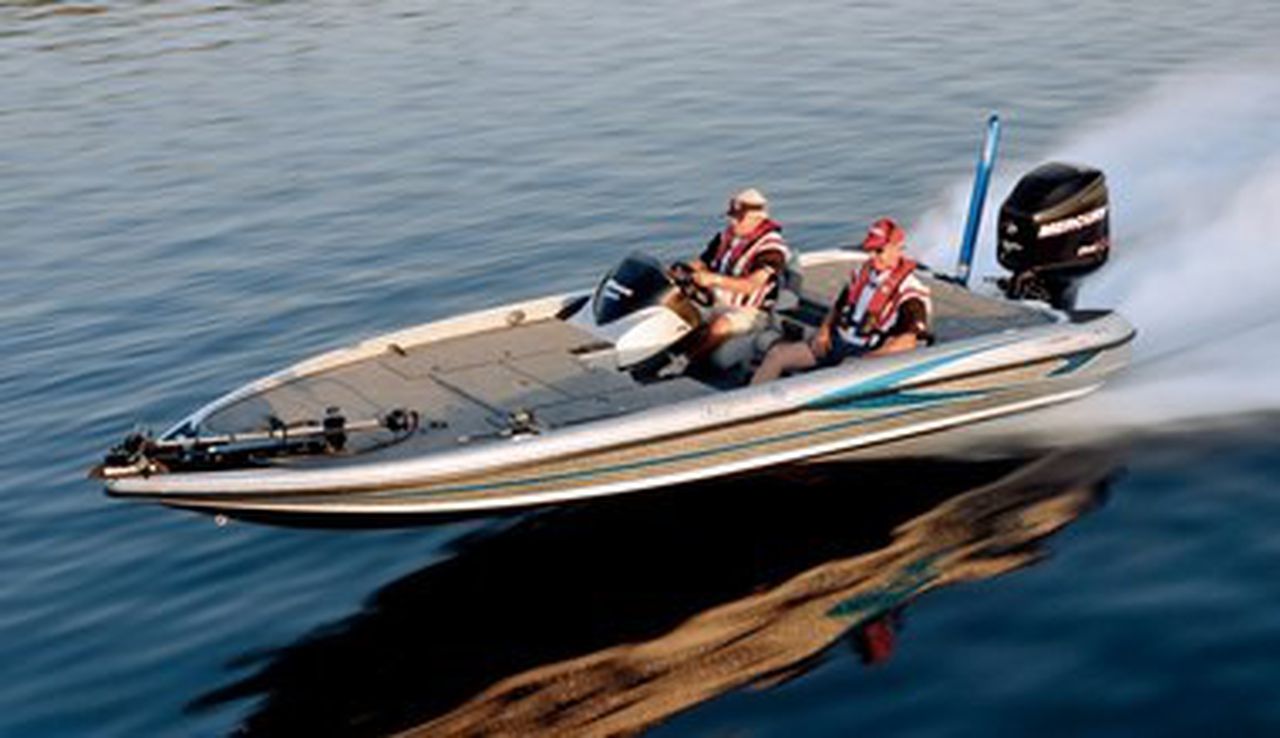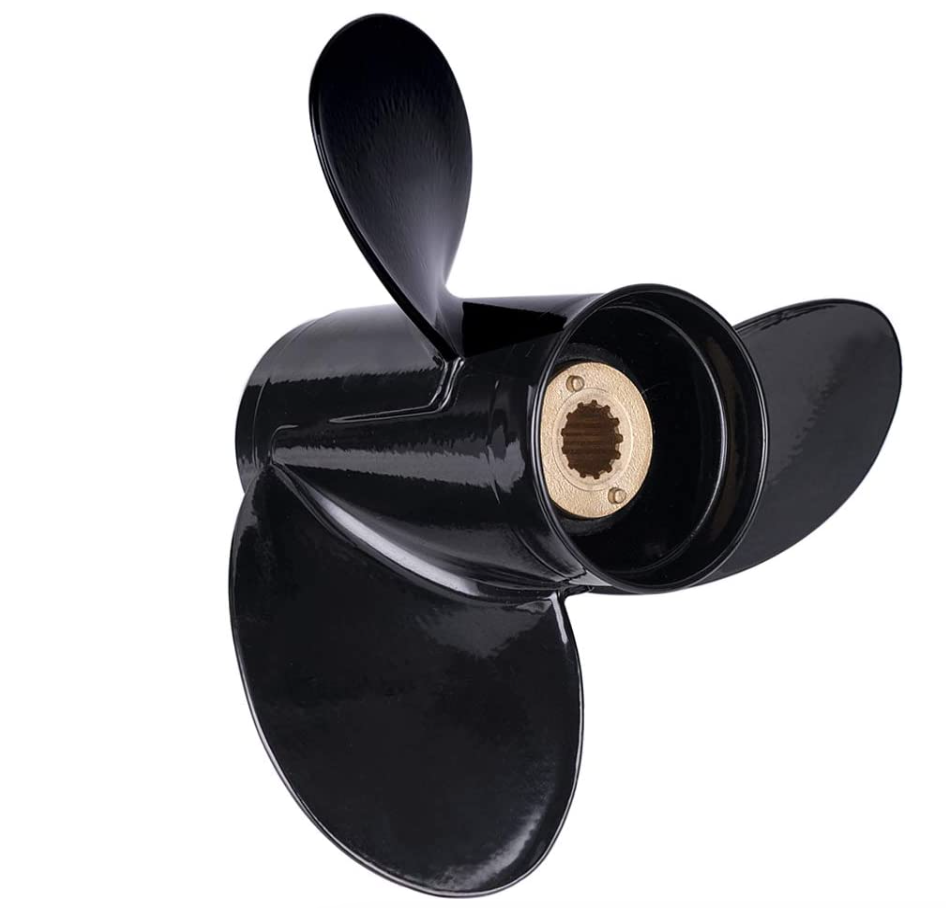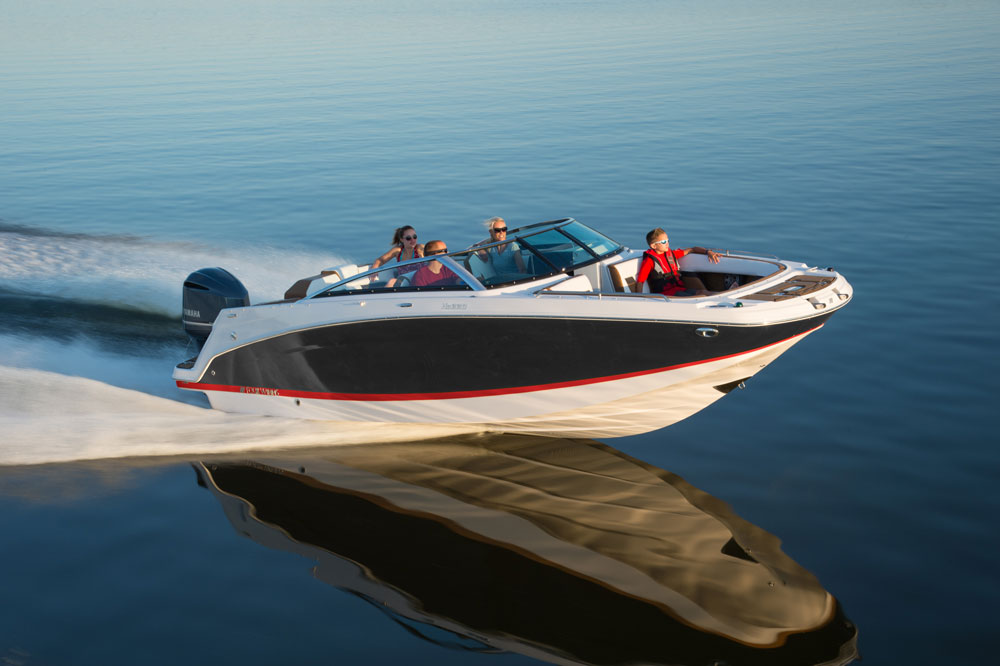Benefits of a Cupped Propeller: Improve Efficiency and Increase Speed

When purchasing a boat propeller there many options and parameters from which to choose for optimal performance. One of these options is having the propeller blade trailing edges formed with a tight bend or “cup.” There is often uncertainty regarding when a cupped propeller should be used and what cupping actually does.
Hopefully this article can help shed some light on the topic and provide everyone with a better understanding on how propeller makers use this technique to provide customers with propellers that perform optimally.
What is Cup?
Cupping or adding a cup is a pretty simple geometric change of the trailing edge of the propeller blades. It’s done by bending the propellers blades’ trailing edge towards the pressure face (blade surface facing aft), resulting in an edge with a noticeable curve. This curved area is called “cup.” It looks as if the trailing edge is bent into a small radius. This can be felt by running your finger from the leading edge toward the trailing edge. It will be felt at the end of the blade chord length.
The amount of cupping can vary in how large the bend is and where it’s located on the blade’s trailing edge. Engineers develop a particular cup for each type of propeller and it is then accurately manufactured into all of the same parts. For inboard propellers, there may be several different degrees of cup available for a particular style.

Cupping the propeller provides many benefits for relatively small changes to the blade form. Adding cup changes the effective or nominal pitch by essentially adding camber to the blade shape. This camber helps reduce cavitation and increase performance. It is such a small change with minimal impact on the rest of the blade design, so it can be applied to existing propeller designs without significant changes to the patterns or tooling used to make them.
Here is a common rule of thumb regarding correct propeller cup: When using a cupped propeller, the pitch should be reduced by 1” to 2” (2.54 cm to 5.08 cm) compared to the non-cupped propeller.
When to Apply Cup
This can be a little confusing to most people who are not familiar with propellers. When applying cup, a reduction in propeller pitch is recommended to keep the effective pitch the same. This small change in the blade’s trailing edge shape helps the propeller perform better.
Below are a few common questions that we get regarding propeller cup. Hopefully this information will help you to better understand the use of cupped propellers.

Why don’t I just add a cup to the already correctly pitched prop?
This would not necessarily work because the result would be a propeller with more pitch and would reduce engine rpm at wide-open throttle. If an engine is barely reaching the minimum recommended maximum engine rpm, adding cup would result in an overloaded engine and that could hamper boat performance.
Can cup be added or removed to my propeller instead of buying a new prop?
Yes, propeller repair shops are familiar with adding, removing, or changing the amount of cup in a propeller.
Is a propeller cup recommended for all applications?
No but is always something that can be added at any repair facility later if necessary. We recommend propellers with cup for higher cavitation applications and or applications where the vessel’s speed is more than 34 mph (30 knots). Using a propeller a cupped trailing edge is most beneficial for planning hull boats running at higher speeds.
Does cupping the propeller help with fuel efficiency?
Maybe. Propeller cup helps with propeller efficiency. If the boat is operated at certain speeds where propeller efficiency is improved due to cup, then there should be an increase in fuel efficiency. For example, if a fishing boat spends most of its time trolling, at low speeds and engine rpm, the benefits of propeller cup will probably not be noticed. However, if this boat spends a significant amount of time running at higher speeds, say to get to the fishing grounds, a cupped propeller would likely help improve the fuel efficiency.

Which is better, a Cupped Prop vs Custom?
There are many great hydrodynamic tools to help evaluate propeller performance. When doing custom propeller design work, engineers run multiple simulations trying to achieve optimal performance. They do this by using propeller-blade designs with variable pitch or progressive pitch characteristics and adding specific camber (curvature) into blade-section designs. This is similar concept to the propeller cup, but it’s used across the entire blade surface instead of the trip.
Can Cup be applied to a Stainless steel propeller?
Yes it can be applied but it is more difficult than applying it to a bronze or NiBrAl propeller. It must be cast into stainless-steel propellers during the manufacturing process. Because of this, the cost of a cupped stainless-steel propeller may be higher.
Can too much cup be applied?
Yes. There are many factors to consider including engine loads, propeller material properties and the blade trailing edge thickness. The cup application includes bending the trailing edge to the pressure face. If this bend is too excessive or the blade edge is too thin, the trailing edge could crack.